What are the three major functional classes of neurons?
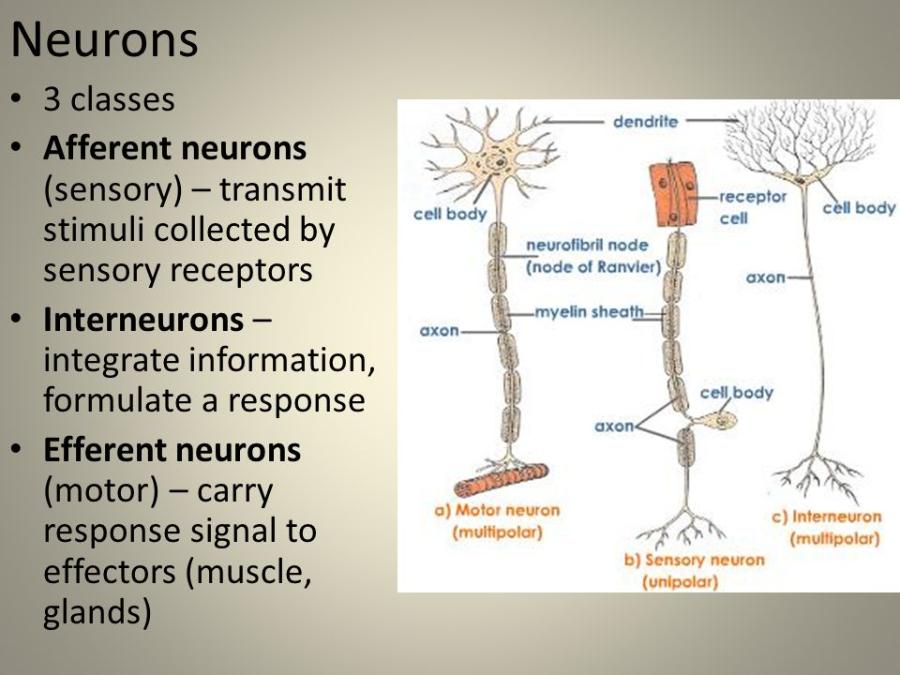
3 Types of Neurons 1) Afferent neurons (sensory) transmit stimuli collected by receptors and sends to the central nervous system, 2) Interneurons (integrate information) sends information between sensory and motor neurons within the central nervous system, 3) Efferent neurons (motor) sends response signal from central nervous system to muscles and glands.
Neuron
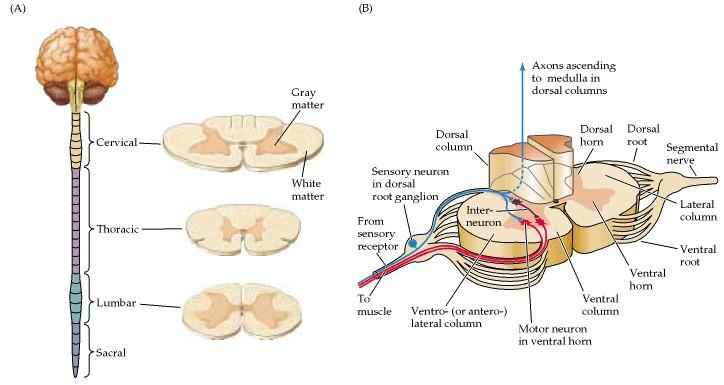
Neurons:
- Most important cells of the nervous system
- Sends signals to other neurons and effectors
- Contain glial cells that are important for a neuron. They provide a structure for the neuron and protect them from outside invading organisms.
Spinal Cord (Function)
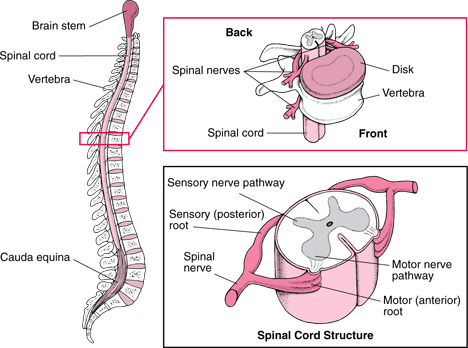
Spinal Cord Functions:
- Carries sensory info to the brain
- Carries sensory info from the brain
- Processes info and can execute reflexes (i.e. - pulling from something hot)
Spinal Cord (function)

The spinal cord is:
- Is part of the central nervous system (CNS)
- Works with the brain
- Is a long tube with a central canal running down the middle
Spinal Nerve
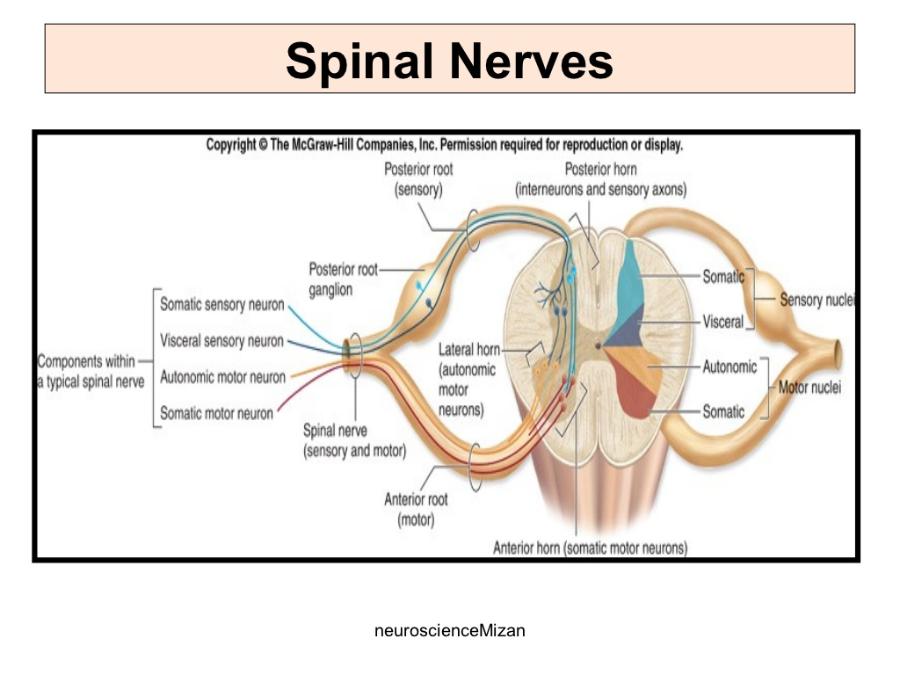
The posterior/dorsal (contain sensory axons) and anterior/ventral (contain motor axons) nerve roots fuse to form a spinal nerve.
Spinal Nerves
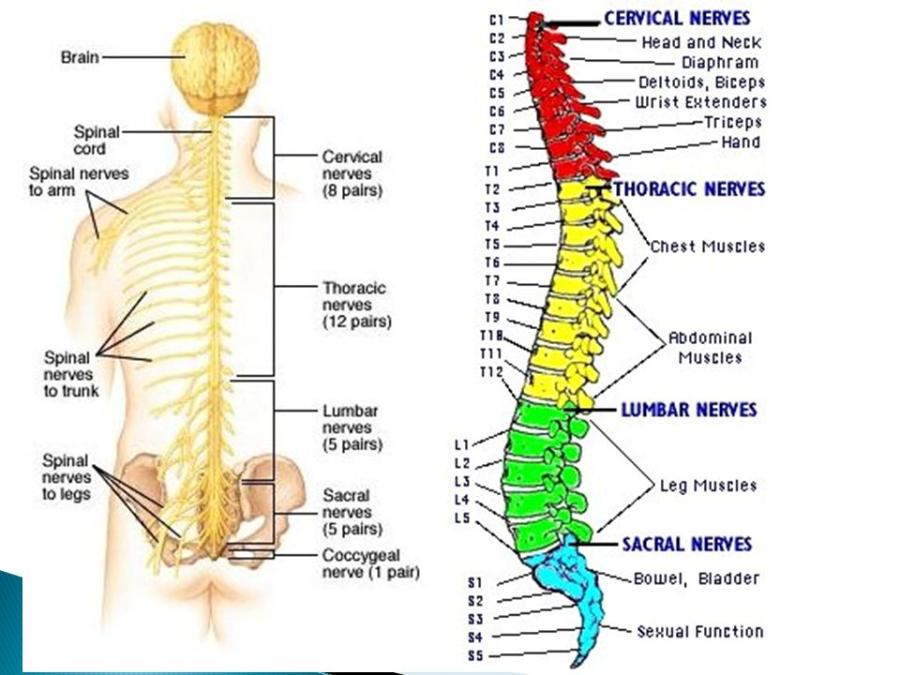
Spinal nerves are attached to the spinal cord and carry information directly to and from the spinal cord. The spinal nerve contains motor and sensory nerve fibers to and from all parts of the body. There are 31 pairs of spinal nerves. They are mixed nerves carrying sensory and motor information. The spinal cord is divided into four regions: cervical (C), thoracic (T), lumbar (L) and sacral (S),
Somatic Motor Neurons
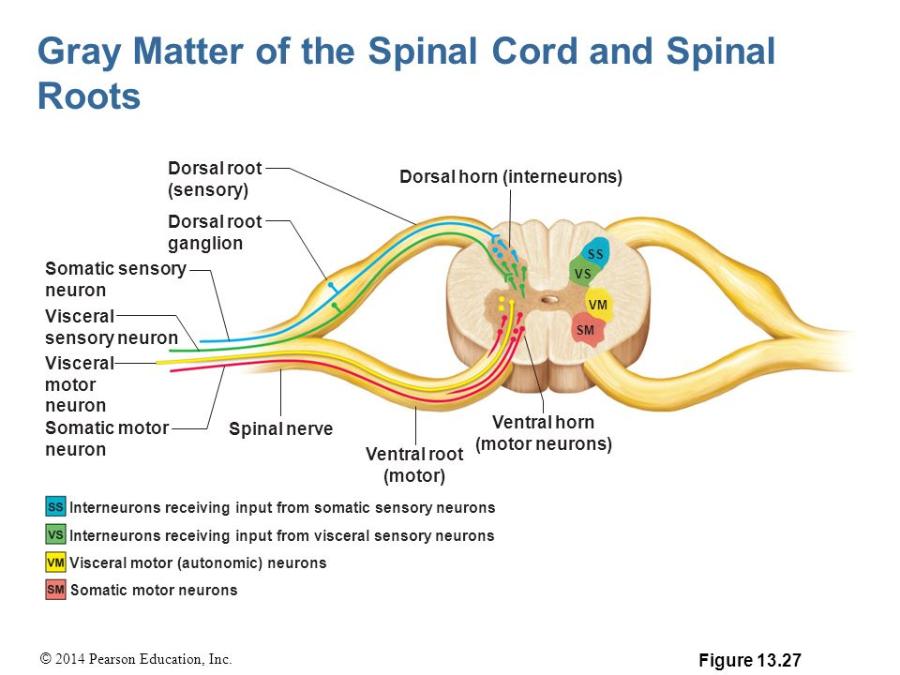
Somatic Motor Neurons:
Somatic motor neurons are multipolar neurons. That means each somatic motor neuron has numerous dendrites and a single axon extending from its soma. Somatic (sensory) motor neurons sends signals to skeletal muscle cells. The axon of a somatic motor neuron extends into the
Visceral Motor Neurons

Visceral Motor Neurons:
Visceral (efferent) motor neurons send signals to glands, cardiac muscle cells and smooth muscle cells.
Dendrite
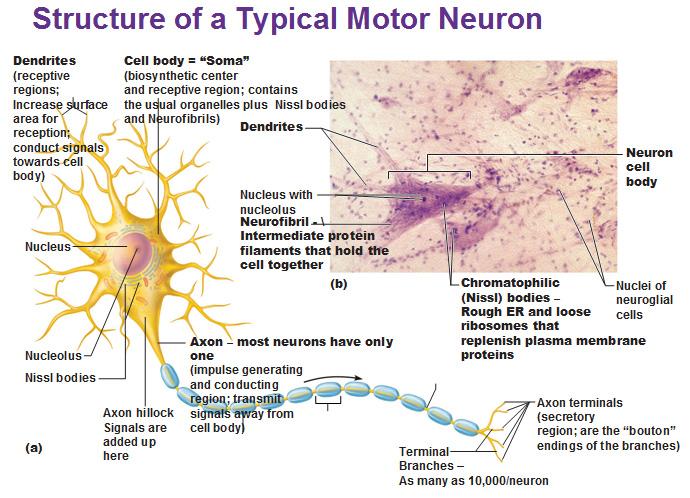
Dendrites:
Dendrites bring electrical signals to the cell body.
Axon (Function)

Axons sends electrical signals away from the cell body to muscles or glands.
Soma

The Soma, or cell body, is where the signals from the dendrites are joined. The soma and the nucleus do not play an active role in the transmission of the neural signal. Instead, these two structures serve to maintain the cell and keep the neuron functional.
Anterior horn (also called ventral horn) of spinal cord

Anterior horn - Is located in the front of the spinal cord (near inside of body). Is the anterior grey matter that contain motor neurons that affect the skeletal muscles.
Posterior horn (also called dorsal horn) of spinal cord

Posterior horn - is located in the back of the spinal cord (outside of back). Is the posterior of grey matter that contains bodies of interneurons. It receives several types of sensory information from the body, including touch and sensation. This information is sent from receptors of the skin, bones, and joints through sensory neurons whose cell bodies lie in the dorsal root ganglion.
Lateral horn of the spinal cord

Lateral horn projects to the side in a triangular shape in the thoracic and upper lumbar spinal sections. Contain the bodies of visceral motor neurons.
Dorsal Root Ganglia
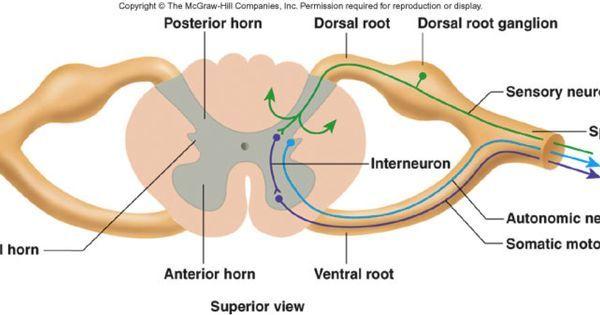
The dorsal root ganglion contains the cell bodies of sensory neurons that bring axons to the spinal cord.
Dorsal Root (posterior/back root)
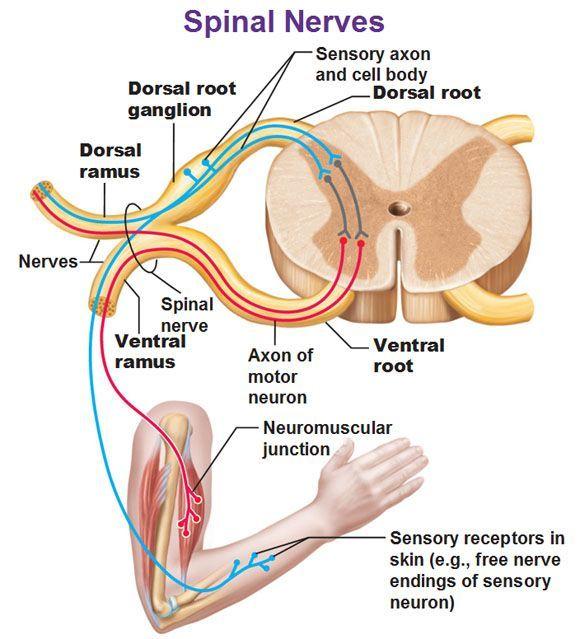
The dorsal roots are nerves where axons travel into the back of the spinal cord into the gray matter of the spinal cord.
Ventral Root (anterior root)
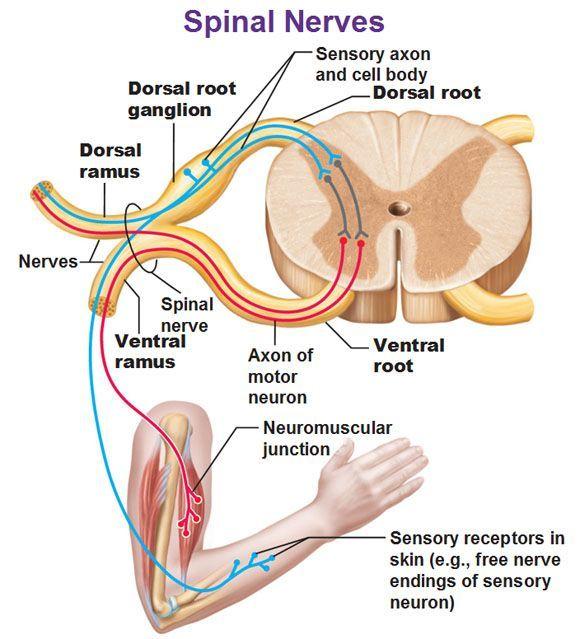
The ventral root contain motor neutron axons that exit the front of the spinal cord into the gray matter of the spinal cord.
Spinal Meninges
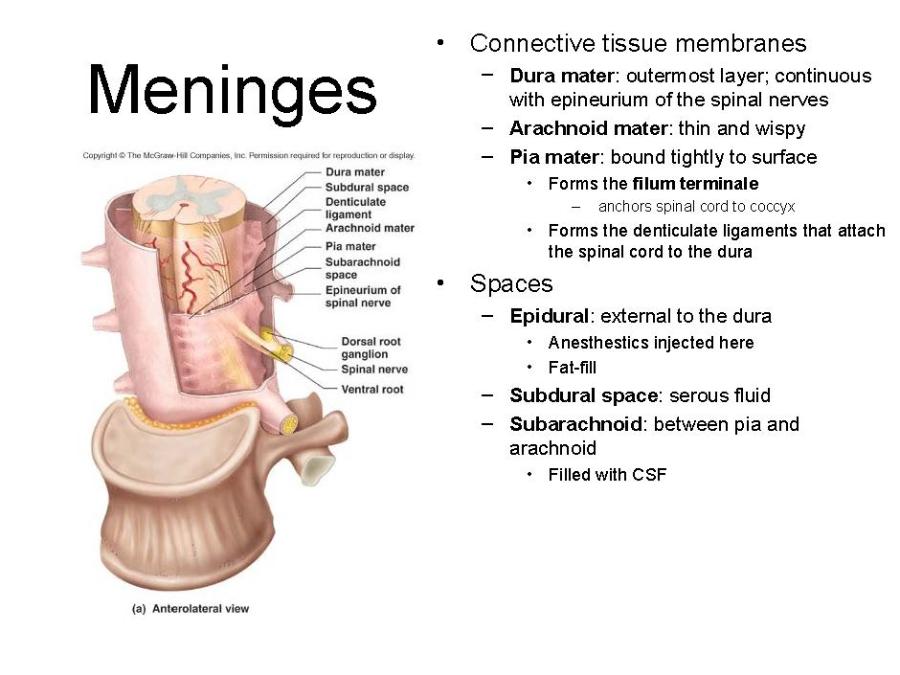
Spinal Meninges the three membranes enclosing the spinal cord, comprising the dura mater, the pia mater, and the arachnoid membrane.
Posterior
Posterior means dorsal or back/outside
Anterior
Anterior means ventral or inside
Anterior Funiculi (or ventral funiculi)
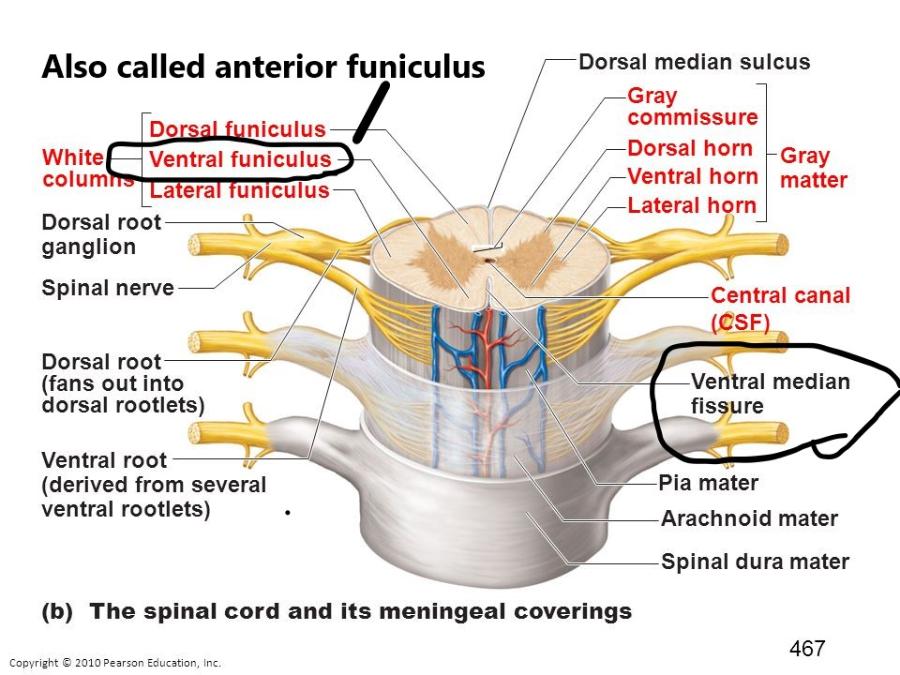
Anterior Funiculi: white matter of the anterior section of the spinal cord. Axons in the anterior funiculi carry signals down the spinal cord from the brain.
Lateral Funiculi
Lateral Funiculi contain a mix of anterior and posterior funiculi.
Posterior Funiculi (or dorsal funiculi)
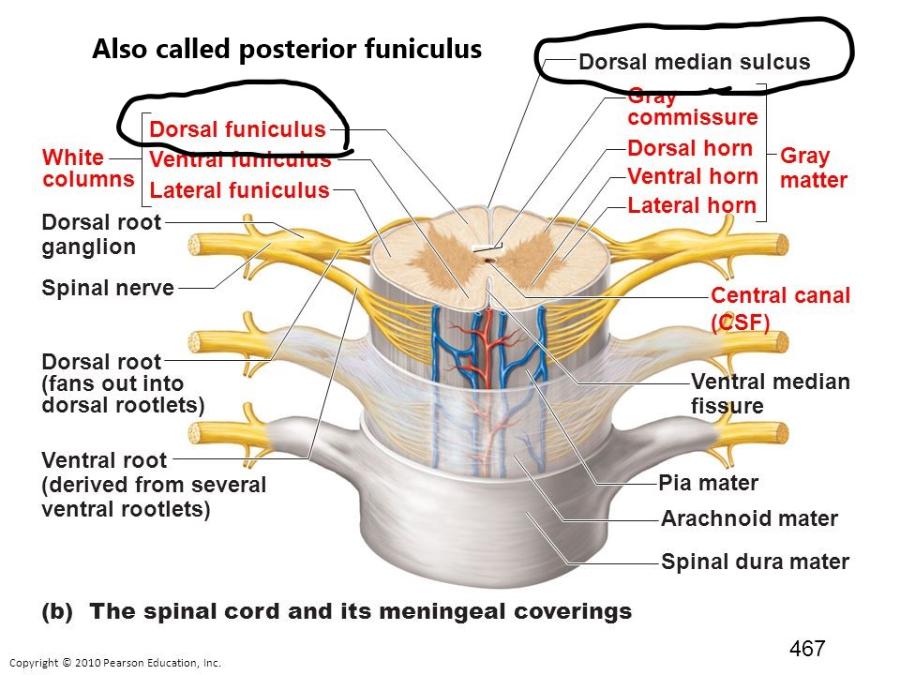
Posterior Funiculi: white matter of the posterior section of the spinal cord. Axons in the posterior funiculi carry signals up the spinal cord.
Funiculi
Funiculi: also called columns
Gray Matter
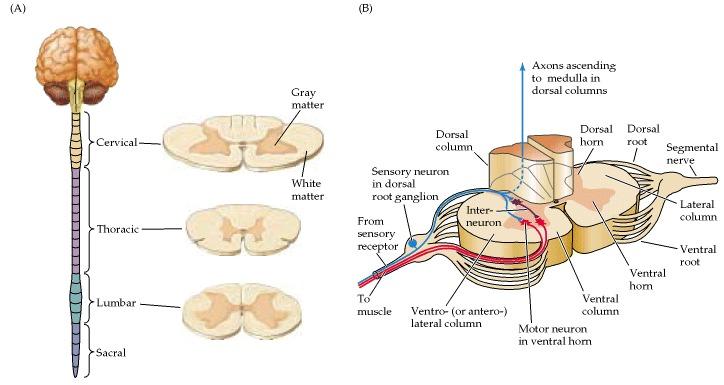
Gray Matter: area of the spinal cord rich in nerve cell bodies that has a butterfly shape.
White Matter

White Matter: area of the spinal cord that consist primarily of glial cells and axons, which gives the tissue a white coloring. It contains sensory and motor neurons. The glial cells is a type of cell, in the nervous system, that provides support for the neurons.
Efferent:
Efferent: The conduction of impulses outward from/away the brain or spinal cord.
Efferent means to act.
Afferent
Afferent: The conduction of impulses inwards to the brain or spinal cord.
Afferent means to receive.
Central Nervous System
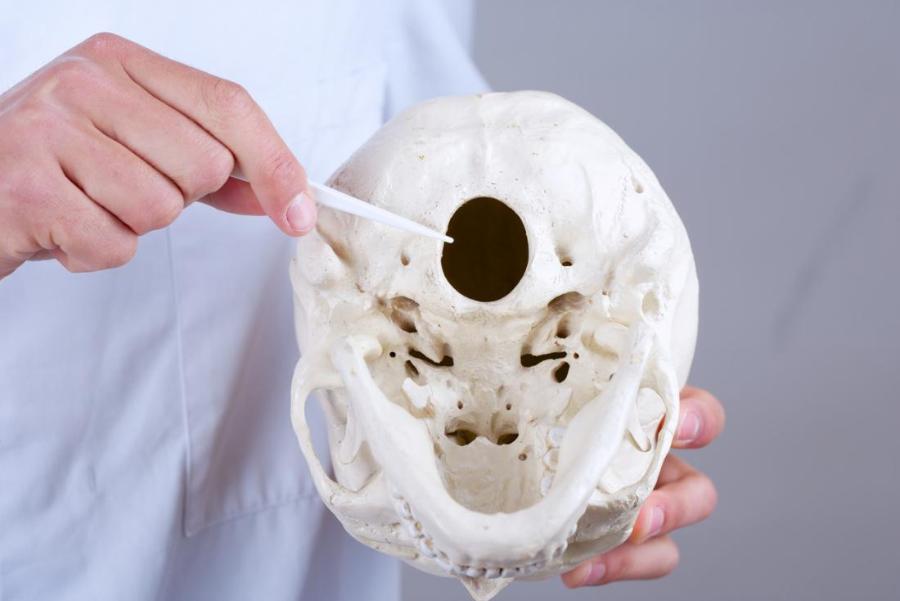
Central Nervous System (CNS)- The brain and the spinal cord are the two organs that make up the CNS. The foramen magnum divides the brain and the spinal cord. The foramen magnum is the hole in the base of the skull through which the spinal cord passes.
What is CSF?
CSF: cerebral spinal fluid
What is a motor unit?
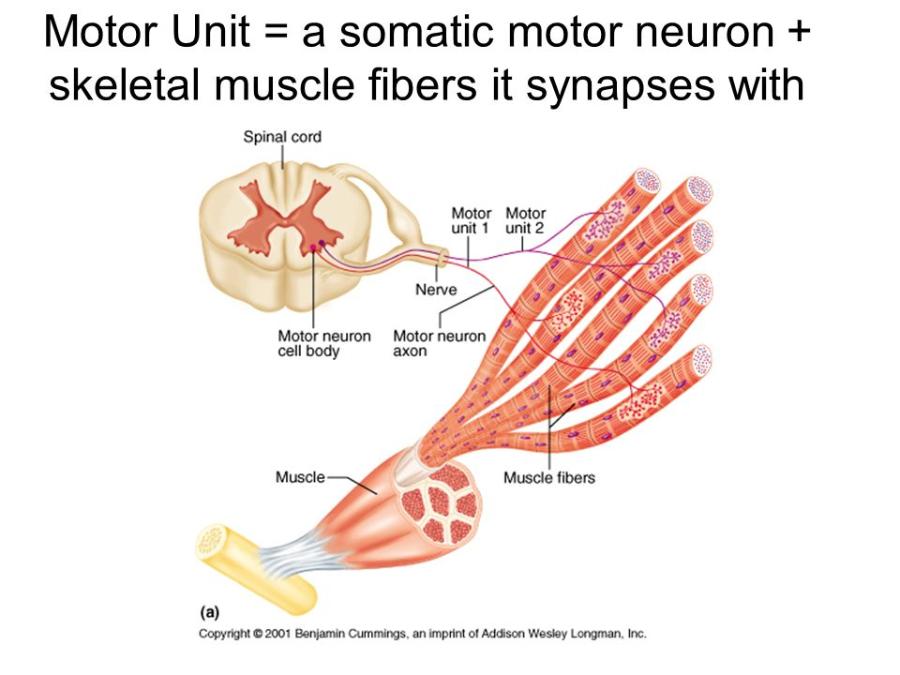
a motor unit = a somatic motor neuron + skeletal muscle fibers it synapses with
What is a synapse?
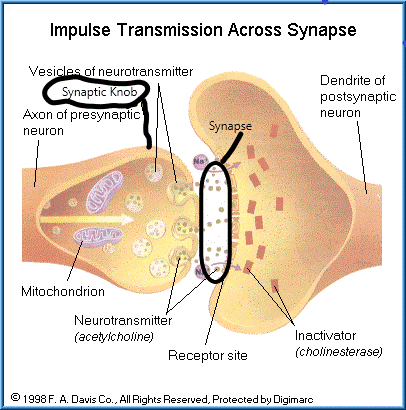
A synaptic knob usually lies adjacent to another cell. The neighboring cells and the gap that separates them is called a synapse. Neurotransmitters travel down the axon to synaptic knobs where it signals the synaptic vesicles to release stored neurotransmitters.
Why is the spinal cord enlarged in two places?
Why is the spinal cord enlarged in two places because the cervical and lumbar enlargements of the spinal cord result from enlargement of the gray matter that contains the neural machinery necessary to operate the limbs.
Label the three meninges of the spine. Label the subarachnoid space and epidural space
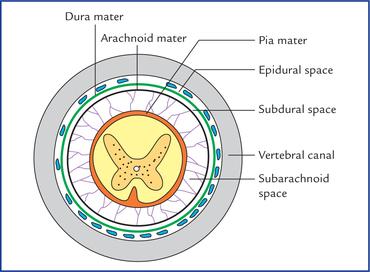
Label the three meninges of the spine. Label the subarachnoid space and epidural space.
What structure are the bodies of sensory neurons found?
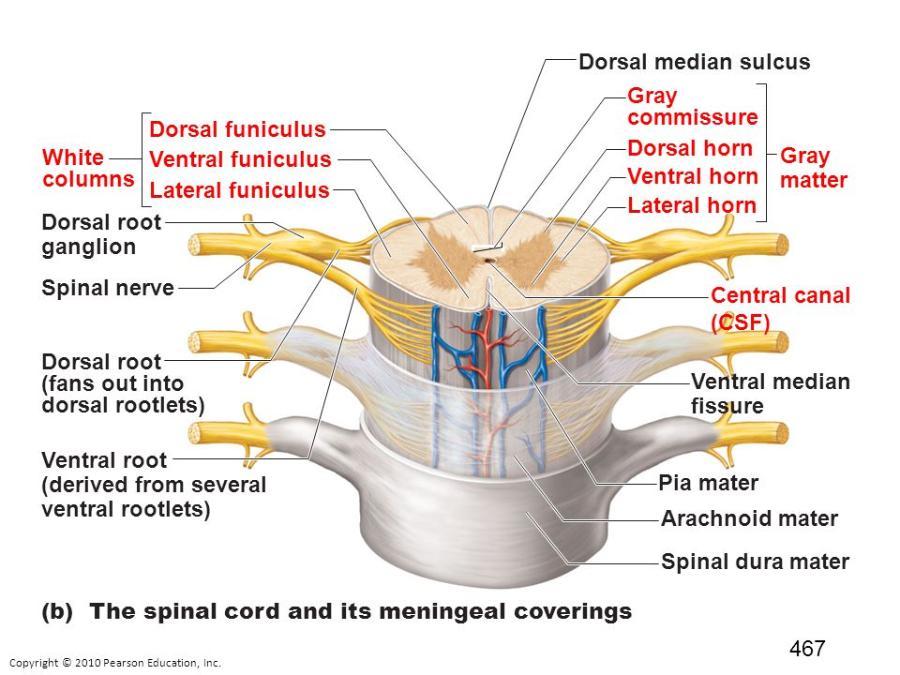
The cell bodies of sensory neurons are found in clusters in the dorsal root ganglia, next to the spinal cord.
In what part of the spinal cord are bodies of somatic motor neurons found?

Cell bodies of somatic motor neurons are found in the anterior (or ventral) gray horns (gray matter) of the spinal cord. They provide nerve impulses for contraction of skeletal muscles.
What is the difference between sensory neuron and a motor neuron?
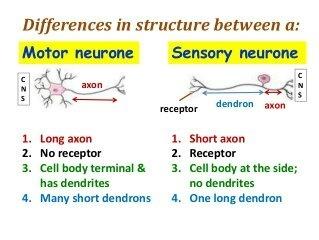
- Sensory neurons carry signals from the outer parts of your body (periphery) into the central nervous system.
- Motor neurons (motoneurons) carry signals from the central nervous system to the outer parts (muscles, skin, glands) of your body.
In what structures are afferent axons found?
Afferent nerves conduct signals from sensory neurons to the central nervous system, for example from mechanoreceptors in skin
In what structures are efferent axons found?
Efferent axons (nerves) conduct signals away from the central nervous system to target muscles and glands. Therefore efferent axons can be found in muscles or glands.
What is an axon and it's function?
An axon or nerve fiber, is a long, slender projection of a nerve cell, or neuron, in vertebrates, that typically conducts electrical impulses known as action potentials away from the nerve cell body. The function of the axon is to transmit information to different neurons, muscles, and glands.
Describe the gross anatomy of the spine.
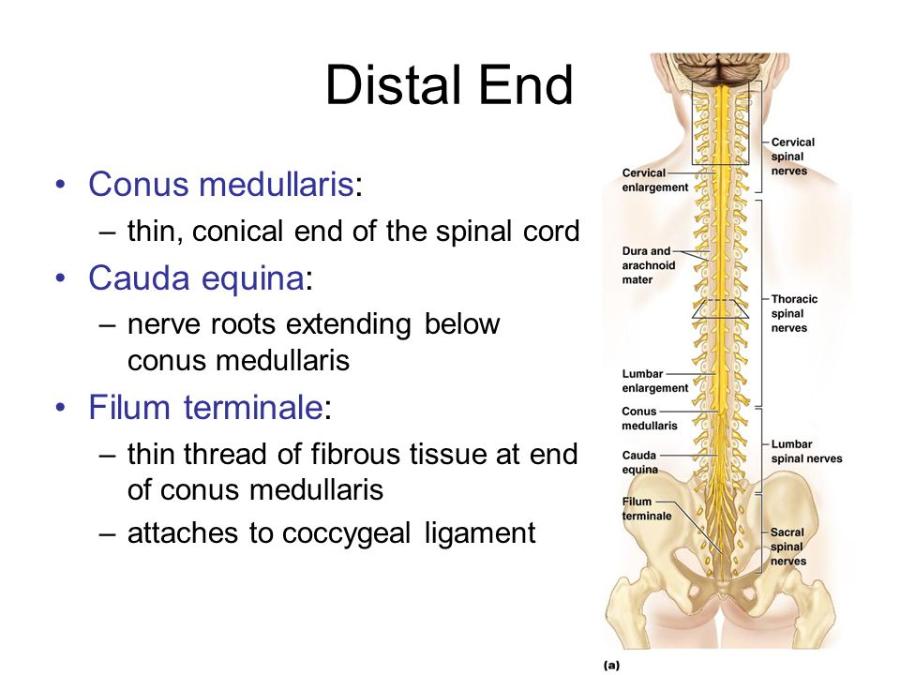
The top of the spine begins at the foramen magum and ends near the L1 vertebra. The spinal cord does not extend all the way down the vertebrae.
Conus medullaris - is the top tip of the spinal cord
Cauda equina - nerve roots extending below the conus medullaris
Filum terminale - is an extension of the pia mater of the spinal cord and attaches to the conus medullaris to the coccyx (tail bone).